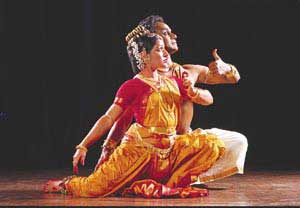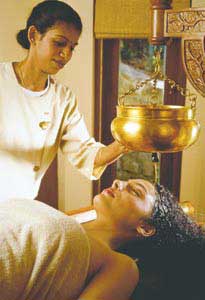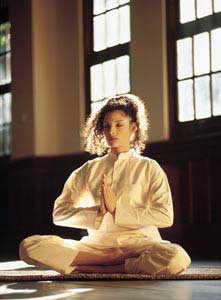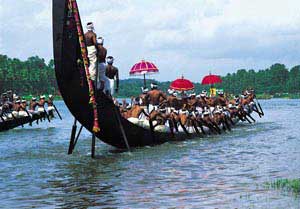Arts
World Of Indias

There are as many Indias as you can see, dream or imagine.
|
When Mother Yashoda ordered the infant Krishna to open his mouth to check if he had eaten any butter stolen from the Gopis, the milkmaids of Gokul, she was mesmerized to see entire worlds within his mouth. That wonderful story came to mind as I set off on a quickie, three-week trip to India and tried to pry open the nation’s mouth to see what was going on in there
Like the universe inside Baby Krishna’s mouth, contemporary India – bright and vital and incredibly young and of course bone-achingly old and wise and unchanging – showed me all the different worlds that existed within it. I had always viewed India with the eyes of the returning prodigal daughter, through the prism of nostalgia. I’d catch up with family, meet old friends and eat well-remembered treats. This time I was going to see it through many different eyes, those of a journalist as I worked on a story about health tourism in India for Little India, and of a volunteer working for health and education in India, through a New York nonprofit organization, Children’s Hope India. I was also being given the chance to see India as a complete outsider, as a foreigner, through the eyes of 20 American women who were traveling to Indiafor the very first time as part of a businesswomen’s delegation. What must it be like to be exposed to the juggernaut of India – color, confusion, extreme beauty, extreme riches, and extreme poverty – for the very first time?
When I landed at Sahar International at about 3 am, the metropolis of Bombay was deep in slumber. My first glimpse was of a sleeping giant as the driver sped through a silent dark city, oddly deserted and calm, as if it was on medication and sedated. My immediate first impression was of the visual changes that multinationals had brought to the city. There were several towering five star hotels as we exited the airport and the endless billboards, like flying temple pennants, advertised an array of consumer goods, real estate and financial services. I saw the Haji Ali Mosque rising out of the water, the beaches of Chowpatty and other familiar landmarks – oddly distorted in the dark. How would the city look in the morning light when its energy and its chutzpah returned with its people? I was not disappointed. As in every morning in Bombay since childhood, the pigeons woke me up with a grand orchestra of gurgling and cooing. Then the crows and the street vendors got into the act with their rancorous caw-caws and monotonous chants, and you knew yet another day had begun in bustling Bombay. I raced across to the Taj Hotel, which was just down the block and where the delegates had gathered at the coffee shop to begin their encounter with India. Yes, it was going to be a clean encounter, India seen through the glass of air-conditioned buses and from the vantage of fabulous rooms in the Taj, overlooking the Gateway of India.
The group I was traveling with was extraordinarily accomplished – heads of museums, financial institutions, foundations and arts organizations. The mission was to show them the many Indias each wanted to see. Being part of the American delegation was an invigorating experience. It allowed NRIs like me to be on both sides of the aisle – as an Indian and as an American. So it was that I sauntered into my own country as an outsider – honored guest and tourist, getting a full blast of the famous Indian hospitality. From the moment we landed, there were garlands, dance performances, music recitals and a super dinner hosted by the Taj. “You are in India at the right time,” said Shashi Tripathi, formerly India’s consul general in New York and presently secretary (West) in the Ministry of External Affairs in New Delhi. “India is today full of confidence. It is a rich country, but it is full of challenges, has always been. Today we are the fourth largest economy in the world with a GDP that is hitting 6 -7 percent. We have low inflation, we have high forex reserves. The predictions are that by 2020 India will have outdone China and by 2050, it will be the topmost global player in the economic scene in the world.” Speaker after speaker extolled India’s rise and potential. Of course, the American media are replete with similar stories, but as an Indian from across the ocean, there was a special thrill in having all these facts reiterated by the players themselves, in a sun-filled room with the Arabian Sea gleaming right outside. This was no dry report in the New York Times or Washington Post – we were actually in India, in the middle of all the action!
A real eye opener was a visit to the 300,000 sq. foot state-of-the-art research center of Nicholas Piramal India Ltd, a pharmaceutical company that has revenues of $350 million. It was built in 11 months at a cost of $20 million, numbers which Dr. Swati Piramal, the director, said couldn’t be matched in the United States or Europe. “We’ve assembled a team of 400 world class scientists, we’ve reversed the brain drain. Many of them who had gone abroad to study have come back. And it’s amazing to see the kind of people who are coming back – very intellectual, PhDs, scientists. And the reason they’re coming back is because they want to make a difference.” Clad in protective gear, we toured the art-filled hi-tech facilities and were pleasantly surprised to find that most of the research scientists working on diseases from cancer to diabetes at the center were women. Over the following days the delegation met the movers and shakers from every field. And everywhere we went, along with the economic and scientific reports, there was food and more food. Indeed, when it comes to nurturing guests, India has no equal. It is always on overdrive, be it drink, food, entertainment or warm embraces. We’ve all seen the caring in our own extended families in India. but I was taken aback to find it here in the larger context. For the next five days the members of the delegation were hosted, toasted, loved and made welcome in the very special way that only Indians have. You become instant family – and remain family forever. Yes, I ate paneer cooked in 20 different ways, more gulab jamuns and gajjar ka halwa than I could digest, and was hugged by more people than I can remember. Perhaps the most stunning encounter was at the HR College of Commerce and Economics, which is wedged in between residential apartment blocks in Churchgate.
Every single student was out on the porch, on the stairs and on the roof – in the hundreds. Some holding lighted lamps, some with flowers, all with radiant smiles. The moment the delegation got off the bus, the students erupted into applause – and they kept clapping nonstop, scattering rose petals. There was hardly a dry eye amongst the delegates, so overwhelmed was everyone by the amazing welcome. Along with the rest of the delegates, I saw India as a tourist – a medley of Kathak, Bharat Natyam and Odissi by classical dancers with detailed explanations in English, robust Rajasthani folk songs and dances, bangle makers practicing their art, and yes, even a wizened fortuneteller with his tall tales! We also got a glimpse of Bollywood! On a slow day we didn’t bump into Hrithik Roshan or Aishwarya Rai, but did drive through the miles and miles of Film City where in different areas vans and mobile homes were parked and shooting was going on behind canopies of trees. We passed a whitewashed temple on a hill, which looked oddly familiar. Our guide explained it was used in practically every Bollywood movie, and painted over according to the requirements. After all, God has to be the witness when lovers are solemnizing secret weddings or the dying hero makes his angst-ridden farewell speech! Our brief stop at BR TV Studios in Santa Cruz showed us the labor and the sheer repetition that goes into the smooth finished product that we see on screen. One scene with a man entering a room was shot again and again. Later we wandered through the many rooms with permanent sets – bedrooms and living rooms, and a prop room which had just about everything from antique furniture to steel trunks and costumes. Later we stopped at The Club, a sleek new health and recreation resort in Andheri, which is reputed to be a great favorite of the movie stars, especially Shahrukh Khan who someone mentioned is a frequent visitor, often with his family. Spread over eight acres of land, The Club has several restaurants, spas and sporting facilities.
Years ago, Andheri used to seem like another planet to those of us used to being in the center of the city. Now corporations like Coca Cola, Colgate, Pfizer, Enron Corporation, Kelloggs, Kodak, L’Oreal and Procter & Gamble are all situated there as are the Bandra Kurla complex and the American School. On our drive back, we stopped at yet another world, old yet resilient and far from about to disappear: The washing ghats where the dhobis still ply their trade, laundering the city’s dirty linen, rarely losing a garment as they keep track of literally hundreds of items. One of the Indian delegates in the group recalled her childhood in Bombay where a well-starched school uniform was delivered rain or shine by the dhobis – except during the torrential rains when sometimes the clothes didn’t dry. An extra uniform was insurance in a city of monsoons. Other worlds that we espied were of robust, raging consumerism, with huge mall complexes, boutiques and restaurants. Seeing Bombay from the windows of five star hotels or those of the black and yellow taxicabs, one could see it was a city on the move with construction everywhere. So, I asked him, when will there be developments for the low-income people who live in the slums and on the streets? His response: “This is the last vestige of that socialistic policy which has not seen a hreform process. Now it’s starting to creep, to happen so we are going to see a huge amount.” He pointed out that once that takes off, India would see a paradigm shift in GDP growths because of housing, since there is such a huge deficit in affordable housing. Construction, which is the second largest employer of people in the country today always provides jobs for the low income and the illiterate, something industries like information technology do not.
He added, “If this type of change which is required to happen in the country does take place, information technology will be just the icing on the cake or the cherry on the pie, but the real cake will be the construction, real estate and housing sector and that’s what we are looking for.” All too soon, the discussions and the talk fests came to an end. Our five days were over and some of the delegates were returning to the United States while others were heading on to a resort in Cochin for a touch of health tourism. We all said very Indian, very emotional goodbyes. In India, with the delegates gone, I was tourist no more. I switched roles and was back in my Returning NRI mode, catching up with relatives, stopping for a drink of coconut water on the streets and visiting the Siddhi Vinayak Temple in Prabhadevi, marveling at the crowds that churned around the temple. Indeed, how could one visit Bombay without paying obeisance to the God of Auspicious Beginnings? A stop for kolapuri chappals in Colaba is a must, as is a final walk down the waterfront and a final look at the Gateway of India – unchanging and quite wonderful. But Bombay is headed in new directions. Take a ferry to Alibagh, an island of multimillion-dollar homes of the rich and famous, and you see quite a different Mumbai. Extreme excess and extreme poverty are just two of the many faces of this complex city. On my last day in Mumbai, I visited friends for dinner in a sparkling new apartment right in the heart of this congested metropolis. It was hard to imagine how it was possible to get so much space. But now we have young Indian professionals working with multinationals and it’s showing in their lifestyle. The apartment was airy and art filled and yes, could have been right in Manhattan. To that are the added benefits of having an army of helpers, and a large extended family at shouting distance. Seems a lot like having the best of both worlds to me. Friends had told me that you get everything in India now and I hadn’t quite believed it until I went to Crawford Market, the bustling bazaar of fruits and vegetables – and now every possible product from abroad, such as name brand chocolates and cookies to cosmetics. There were Ferrero Rochas chocolate boxes with Arabic writing, familiar names such as Kit Kat and Cadburys, and countless products with the ubiquitous Made in China label. In fact, China is in your face everywhere with just about everything from clothes to noodles to elaborate light fixtures for the home. To NRIs who have not been back recently and are still living in a 30-year time warp, urban India will be a revelation. Gone are the days that you had to carry back Old Spice and Tang and even jars of Kraft mayonnaise. Indian stores are flooded with goods from Dubai to China. And yes, the Hollywood movies are screening at the same time as in the United States, instead of months or years later.
Then I was once again driving to the airport through the city – the giant awakened – right in mid-afternoon as crowds upon crowds hurtled through the streets. I don’t know if I am right – you can never become a veteran in three weeks – but it did seem to me as if the crowds were all going somewhere, all had a purpose. There were fewer beggars on the street, fewer people just hanging around. There was bustling entrepreneurship everywhere from young magazine hawkers to people selling laundry bags and other household appliances as the traffic stopped at streetlights. Delhi too was on the move with cement mixers everywhere and new flyovers under construction, connecting this wildly expanding city. Earlier Noida and Gurgaon were considered the pits – way out. Now with their satellite rings of malls and multiplex theaters, each one is a thriving center in itself not bound to central Delhi in any way. I visited one of these towering complexes, The Garden Estate Club in Gurgaon to dine at a new Thai restaurant, Cosmos, just opened by a young entrepreneur, Jyoti Punj. The apartment blocks, sleek and modern, of this complex would have made any New Yorker happy – and yes, what could be better than to have Green Thai Curry available for take out! Indeed, with the intensive traveling young people do and their education abroad, the globe seems to be their football. Delhi was full of fun places to eat or simply chill out, such as Mocha, which was always packed with teens and 20-somethings clustered around the low seating; Shalom, a lounge and restaurant with delicious Middle Eastern food, while the atmospheric Olives had a great bar, Italian food and seating under the stars. Lunch on another day at 360, a sleek new contemporary restaurant at the Oberoi was sumptuous, a buffet with so many different options that one could feel full just looking at it all. In Delhi, too, the changes were apparent. The boxy Ambassador was no longer the only car on the road. Cars of every size and shape clogged the streets and there seemed to be fewer bicycles and scooters. As more Indians become affluent, the problems of the developed west are apparent here too. Congested roads and smoke emissions that aren’t pretty. Traffic jams mean you’re sitting in your car forever – and yes, everyone, including the chauffeur, is on the cell phone. One saw diverse worlds: there were worlds of extreme wealth, of luxurious farmhouses, playgrounds for the rich. One farmhouse that I visited could have been right out of a Bollywood fantasy, complete with room after room of designer furniture, a greenhouse, a gym, tennis courts, a swimming pool, fountains and no less than three gardeners. Now what could be nicer than eating spinach from your own garden? The next day I was flung into a very different world – Kathputli Colony, a rough and tough slum town on the outskirts of Delhi, inhabited by Rajasthani migrants, many of who are puppeteers and performers. It is a ramshackle maze of narrow streets, open drains, tiny homes and thousands of people clustered in close proximity. Our non profit group Children’s Hope is active in the community and it was wonderful to see the effects of our programs up close. How the micro-credit programs, for example, had brought out the entrepreneur in women in the community. We stood outside a brand new tea stall in the colony, which one of the young women had opened for her husband with micro-credit. She herself was taking the beautician’s course through vocational classes and hopes to work at a beauty parlor. Now that is beautiful! For me, three weeks in India flew by like three days in this orgy of seeing, experiencing, eating, greeting and meeting. On the last day I was too exhausted to try yet another happening hot spot so we decided to call in for McDonalds. (Dominos had already stopped by with pizzas for the nephews) And as my sister and I sat there, watching spicy Indian serials on TV and munching on burgers and fries from McDonalds – it seemed the most natural thing in the world. In fact, McDonalds is fast becoming an Indian institution and soon there will be a generation of kids who have grown up always having a McDonalds around. That’s globalization for you! Indeed, ‘globalization’ might be a clichéd, over-used word but it seems to be omnipresent: almost every urban family – not to mention rural families, especially in the Punjab – seems to have some foreign connection, be it to the United States, Dubai or the Far East. Either through work or family or friends, everyone sees further than India. Even the yoga teacher who came over to give me a few quickie lessons during my whirlwind stay wanted my New York contact number – just in case! After lectures in London, the white-haired baba and his disciple, clad in orange and yellow robes, were headed for the thriving Indian communities of New Jersey and Chicago. I saw them last at JFK, both settled in wheelchairs pushed by airport attendants, headed all the way from the calm of Brindavan to the frenetic new world of highways and neon lights and yes, Hindu temples in the suburbs. At the immigration counter in New York, the officer asked me how long I’d been away and after a brief glance, promptly stamped my papers. I guess I didn’t look too much like a terrorist. As he handed me my passport, he said with a smile, “Welcome home!” And yes, I have to admit, home it was. And incredibly dear with its form and structure, its cleanliness and its order, even its blandness, compared to the home across the oceans that I had just left behind. An image flashed through my mind’s eye of rushing humanity on the move, of honking scooters, cars and auto rickshaws, of rundown buses, of decorated trucks with sassy sayings like ‘ Boori nazar wale tera moo kala.’ Yes, there’s drama, there’s life in the streets. Not to forget our wonderful, cool cows that swagger through the traffic clogged streets as if they own them. In my brief stay, I had barely seen an iota of India. Just think how many other worlds there are in the mountains, the villages, the countless cities and towns of India. A lifetime would not be enough to see all the universes embedded in the mouth of India. Still one can try as one shuttles between two continents. The next morning, like Dorothy in Wizard of Oz, I woke in my old home, in my old bed. It was almost as if a tornado had whirled me and deposited me back from the shining Emerald City in Oz to Kansas. I was back in my quiet suburban home in Long Island where the clank of the mail being dropped into the slot by the mailman can sometimes be the only sound you hear all day. Had I really dashed through the golden heat and churning chaos of Delhi and Bombay and seen a hundred different worlds? Or was I imagining it all as I looked out at the snow-bound silent landscape of the burbs? No, I hadn’t dreamt it all. There on the kitchen table was the stack of kokies, Sindhi flatbread, that my sister’s cook had specially made for me and the jar of home-made sweet mango pickle – my equivalent of Dorothy’s ruby red slippers. New York is not Kansas and New Delhi isn’t Oz, but in this wonderful new moment in time, I am greedy and I know I can appropriate both homes, appropriate both worlds. |









You must be logged in to post a comment Login